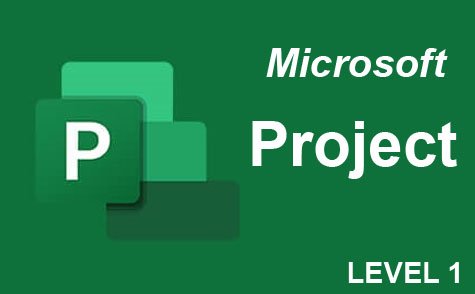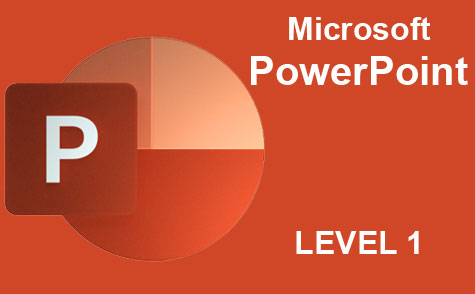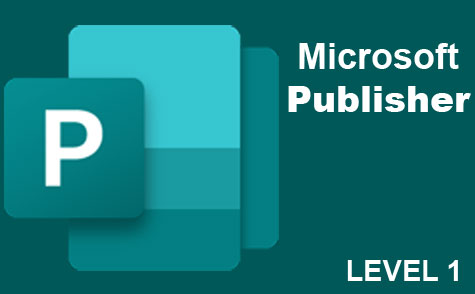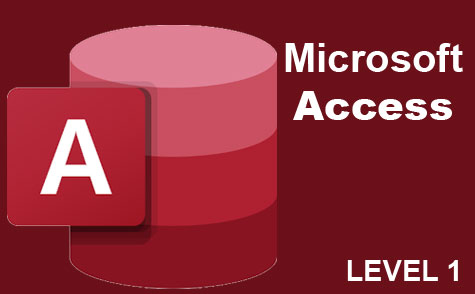Online Class: Cybersecurity 101

no certificate
with CEU Certificate*
-
15Lessons
-
17Exams &
Assignments -
4,809Students
have taken this course -
6Hours
average time -
0.6CEUs
Course Description
Cybersecurity Fundamentals: Safeguarding the Digital Frontier
In an era where the digital realm is deeply intertwined with our daily lives, the value of robust cybersecurity cannot be overstated. It stands as the fortress between our invaluable data and the incessant tide of cyber threats, ensuring the sanctity of our digital identities, assets, and the very fabric of our businesses. It's not just about defending from threats—it's about building a resilient, agile digital world.
Welcome to our comprehensive course on cybersecurity fundamentals—a meticulously designed portal to the world of digital safeguarding. Perfect for novices with an eagerness to delve into the realm of cybersecurity, this course offers a holistic exploration of the field, setting you on the path of becoming a sought-after professional in an ever-evolving industry.
Dive into a plethora of topics that will arm you with the knowledge you need:
- The Digital Blueprint: Understand the intricate hardware underpinning computer networks and the nuances of network design.
- Communication Codex: Master the essence of TCP/IP, get acquainted with common TCP protocols, and grasp the significance of port numbers.
- Wireless Wisdom: Equip yourself with best practices for securing wireless networks and ensuring the safety of remote users.
- Subnet Savvy: Demystify the realm of subnetting and the principles of network administration.
- Threat Landscape: From cyberattacks to wireless breaches, application onslaughts to injection attacks—know your enemy, their tactics, and their weaknesses.
- Social Engineering: Unmask the deceptive world of phishing and its kin, learning how to spot and stop these cunning threats.
- Test & Triumph: Understand the intricacies of penetration testing, vulnerability assessment, and refine your defense mechanisms.
- Crypto Corner: Embark on the cryptic journey of encryption and cryptography, the coded guardians of our data.
Unlike traditional courses, we ensure a seamless learning experience, free from the hassles of acquiring special software or equipment. While our primary objective isn't to prime you for specific certification exams, we lay a solid foundation upon which you can build, be it for further advanced studies or kickstarting a rewarding career in this crucial domain.
Enroll today and embark on a riveting journey to decipher, defend, and dominate the cyber realm. With every module, you'll be one step closer to becoming the vanguard of the digital world. Join us and be a beacon of security in the vast expanse of cyberspace.
- Completely Online
- Self-Paced
- Printable Lessons
- Full HD Video

- 6 Months to Complete
- 24/7 Availability
- Start Anytime
- PC & Mac Compatible
- Android & iOS Friendly
- Accredited CEUs

Course Lessons
Lesson 1. Navigating the World of Cyber Threats
 Lesson 1 Video
Lesson 1 Video Lesson discussions: Reasons for Taking this Course
Lesson discussions: Reasons for Taking this Course Complete Assignment: Motives for Taking this Course
Complete Assignment: Motives for Taking this Course Assessment: Lesson 1 Quiz
Assessment: Lesson 1 Quiz
Lesson 2. Cybersecurity Fundamentals: Protecting Networks from Malicious Attacks
 Lesson 2 Video
Lesson 2 Video Assessment: Lesson 2 Quiz
Assessment: Lesson 2 Quiz
Lesson 3. Network Management Unveiled: An In-Depth Exploration
 Lesson 3 Video
Lesson 3 Video Assessment: Lesson 3 Quiz
Assessment: Lesson 3 Quiz
Lesson 4. The Intricacies of TCP/IP Protocols and Wireless Network Protection
 Lesson 4 Video
Lesson 4 Video Assessment: Lesson 4 Quiz
Assessment: Lesson 4 Quiz
Lesson 5. Understanding Risk: Policies and Controls Essentials
 Lesson 5 Video
Lesson 5 Video Assessment: Lesson 5 Quiz
Assessment: Lesson 5 Quiz
Lesson 6. Navigating the Challenges of Secure System Integration
 Lesson 6 Video
Lesson 6 Video Assessment: Lesson 6 Quiz
Assessment: Lesson 6 Quiz
Lesson 7. Essentials of Incident Handling and Digital Investigation
 Lesson 7 Video
Lesson 7 Video Assessment: Lesson 7 Quiz
Assessment: Lesson 7 Quiz
Lesson 8. Cultivating Resilient Security: Understanding and Training for Modern Threats
 Lesson 8 Video
Lesson 8 Video Assessment: Lesson 8 Quiz
Assessment: Lesson 8 Quiz
Lesson 9. Malware: Unseen Software Threats
 Lesson 9 Video
Lesson 9 Video Assessment: Lesson 9 Quiz
Assessment: Lesson 9 Quiz
Lesson 10. Cyber Attack Types and Prevention
 Lesson 10 Video
Lesson 10 Video Assessment: Lesson 10 Quiz
Assessment: Lesson 10 Quiz
Lesson 11. Strengthening Network Defenses: Unveiling Vulnerabilities and Countermeasures
 Lesson 11 Video
Lesson 11 Video Assessment: Lesson 11 Quiz
Assessment: Lesson 11 Quiz
Lesson 12. Application Security Techniques
 Lesson 12 Video
Lesson 12 Video Assessment: Lesson 12 Quiz
Assessment: Lesson 12 Quiz
Lesson 13. Beyond Devices: The Essential Need for Data Security in Today's Digital Age
 Lesson 13 Video
Lesson 13 Video Assessment: Lesson 13 Quiz
Assessment: Lesson 13 Quiz
Lesson 14. Authentication and Access Services
 Lesson 14 Video
Lesson 14 Video Assessment: Lesson 14 Quiz
Assessment: Lesson 14 Quiz
Lesson 15. Mastering Encryption: An In-Depth Look at Modern Cryptographic Techniques
 Lesson 15 Video
Lesson 15 Video Lesson discussions: End of Course Poll; Course Comments; Course Comments
Lesson discussions: End of Course Poll; Course Comments; Course Comments Assessment: Lesson 15 Quiz
Assessment: Lesson 15 Quiz Assessment: The Final Exam
Assessment: The Final Exam
Learning Outcomes
- Describe what cybersecurity means what why it is important.
- Describe basic network security.
- Summarize principles of network administration.
- Describe risk mitigation.
- Summarize security risks associated with integrating systems.
- Determine basic incident response and forensics.
- Describe the importance of security training.
- Describe malware and cyber attacks.
- Describe cyber attacks and mitigation techniques.
- Summarize addressing security vulnerabilities in a network.
- Describe authentication and access services and controls.
- Summarize encryption and cryptography techniques and best practices.
- Demonstrate mastery of lesson content at levels of 70% or higher.
Additional Course Information

- Document Your Lifelong Learning Achievements
- Earn an Official Certificate Documenting Course Hours and CEUs
- Verify Your Certificate with a Unique Serial Number Online
- View and Share Your Certificate Online or Download/Print as PDF
- Display Your Certificate on Your Resume and Promote Your Achievements Using Social Media

Choose Your Subscription Plan
No Certificate / No CEUs
This course only
| Includes certificate | X |
| Includes CEUs | X |
| Self-paced |

|
| Instructor support |

|
| Time to complete | 6 months |
| No. of courses | 1 course |
Certificate & CEUs
This course only
| Includes certificate |

|
| Includes CEUs |

|
| Self-paced |

|
| Instructor support |

|
| Time to complete | 6 months |
| No. of courses | 1 course |
Certificates & CEUs
Includes all 600+ courses
| Includes certificate |

|
| Includes CEUs |

|
| Self-paced |

|
| Instructor support |

|
| Time to complete | 12 Months |
| No. of courses | 600+ |
Certificates & CEUs
Includes all 600+ courses
| Includes certificate |

|
| Includes CEUs |

|
| Self-paced |

|
| Instructor support |

|
| Time to complete | 24 Months |
| No. of courses | 600+ |
Student Testimonials
- "This course is fantastic! I learned a lot from it, although I know about computers, I was cybersecurity illiterate before this course." -- Gamal G.
- "This course was great. I liked the vocabulary. There were terms I have heard before but never really understood and this course clarified things for me." -- Sonny T.
- "This course has enlighten me to understand how important cyber security is, and all the pro's and con's that take part in being secure. I really enjoyed this course. Thank you." -- Phyllis J.
- "I thought the course was very informative. I learned a lot. Thank you!" -- Lisa K.
- "This course was very helpful. Learned a lot of things that I did not know." -- Cristina G.
- "A very good course overall. I knew a lot before the course but definitely learned some new stuff." -- Benny M.
- "As a beginner in this domain of activity, I found this course easy to understand and very helpful." -- Gabriel C.
- "I like the course. I have a better understanding of cyber security." -- Danil L.
- "i enjoyed this class very much." -- Cristina G.
Related Courses
-
 32 hours
3.2 CEUs
Microsoft Office: Word, Excel, PowerPoint and Outlook
+ More Info
32 hours
3.2 CEUs
Microsoft Office: Word, Excel, PowerPoint and Outlook
+ More Info
-
 26 hours
2.6 CEUs
Ultimate Excel Training Bundle
+ More Info
26 hours
2.6 CEUs
Ultimate Excel Training Bundle
+ More Info
-
 5 hours
0.5 CEUs
Microsoft Outlook Level 1
+ More Info
5 hours
0.5 CEUs
Microsoft Outlook Level 1
+ More Info
-
 11 hours
1.1 CEUs
Introduction to CSS
+ More Info
11 hours
1.1 CEUs
Introduction to CSS
+ More Info
-
 5 hours
0.5 CEUs
Developing Great Social Skills
+ More Info
5 hours
0.5 CEUs
Developing Great Social Skills
+ More Info
-
 14 hours
1.4 CEUs
QuickBooks Online
+ More Info
14 hours
1.4 CEUs
QuickBooks Online
+ More Info
-
 7 hours
0.7 CEUs
Microsoft Word Level 1
+ More Info
7 hours
0.7 CEUs
Microsoft Word Level 1
+ More Info
-
 14 hours
1.4 CEUs
QuickBooks 101
+ More Info
14 hours
1.4 CEUs
QuickBooks 101
+ More Info
-
 9 hours
0.9 CEUs
Microsoft Project Level 1
+ More Info
9 hours
0.9 CEUs
Microsoft Project Level 1
+ More Info
-
 8 hours
0.8 CEUs
Quicken Tutorial: All Versions
+ More Info
8 hours
0.8 CEUs
Quicken Tutorial: All Versions
+ More Info
-
 7 hours
0.7 CEUs
Microsoft Excel Level 2
+ More Info
7 hours
0.7 CEUs
Microsoft Excel Level 2
+ More Info
-
 6 hours
0.6 CEUs
Google Docs
+ More Info
6 hours
0.6 CEUs
Google Docs
+ More Info
-
 8 hours
0.8 CEUs
MySQL
+ More Info
8 hours
0.8 CEUs
MySQL
+ More Info
-
 12 hours
1.2 CEUs
Adobe Photoshop
+ More Info
12 hours
1.2 CEUs
Adobe Photoshop
+ More Info
-
 8 hours
0.8 CEUs
Microsoft PowerPoint Level 1
+ More Info
8 hours
0.8 CEUs
Microsoft PowerPoint Level 1
+ More Info
-
 12 hours
1.2 CEUs
Microsoft Excel Level 1
+ More Info
12 hours
1.2 CEUs
Microsoft Excel Level 1
+ More Info
-
 20 hours
2.0 CEUs
Photoshop Elements 101
+ More Info
20 hours
2.0 CEUs
Photoshop Elements 101
+ More Info
-
 6 hours
0.6 CEUs
Microsoft Publisher Level 1
+ More Info
6 hours
0.6 CEUs
Microsoft Publisher Level 1
+ More Info
-
 7 hours
0.7 CEUs
Google Sheets
+ More Info
7 hours
0.7 CEUs
Google Sheets
+ More Info
-
 17 hours
1.7 CEUs
Introduction to SQL
+ More Info
17 hours
1.7 CEUs
Introduction to SQL
+ More Info
-
 7 hours
0.7 CEUs
Microsoft Excel Level 3
+ More Info
7 hours
0.7 CEUs
Microsoft Excel Level 3
+ More Info
-
 7 hours
0.7 CEUs
Personal Communication Skills Level 4
+ More Info
7 hours
0.7 CEUs
Personal Communication Skills Level 4
+ More Info
-
 3 hours
0.3 CEUs
Microsoft Access Level 1
+ More Info
3 hours
0.3 CEUs
Microsoft Access Level 1
+ More Info
-
 8 hours
0.8 CEUs
Learn HTML - Create Webpages Using HTML5
+ More Info
8 hours
0.8 CEUs
Learn HTML - Create Webpages Using HTML5
+ More Info
-
 7 hours
0.7 CEUs
Google Slides
+ More Info
7 hours
0.7 CEUs
Google Slides
+ More Info





